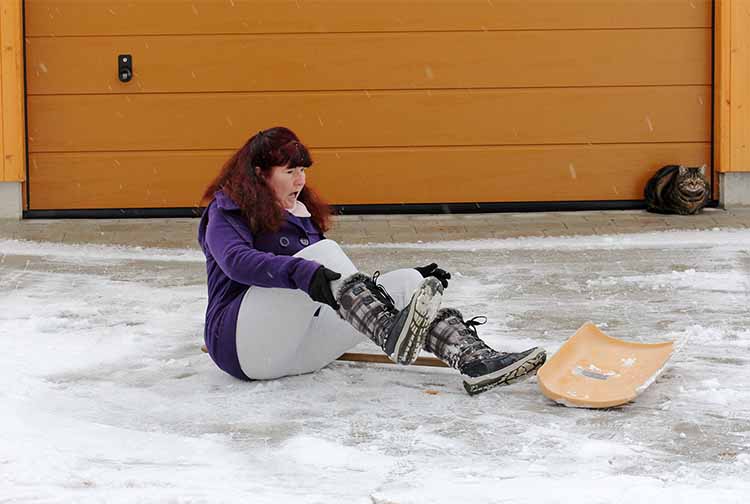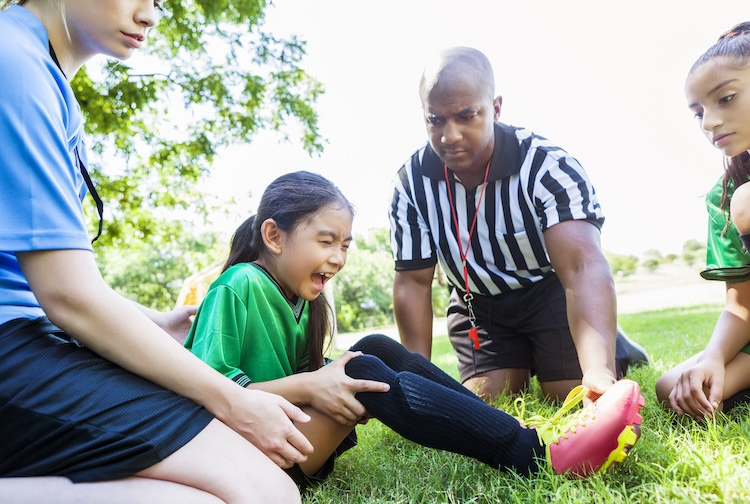
Preventing winter injuries: Tips to keep you safe
Our same-day orthopedic clinics can see you right away. But it’s best to avoid injuries altogether.
January 13, 2022 Photo: Getty Images
Photo: Getty Images
By Samantha Kramer
It’s winter! The season of snowflakes, hot cocoa and — slips and falls. Fortunately, VCU Health offers same-day orthopedic clinics in eight locations to handle such mishaps. You can schedule an appointment at (804) 828-7069 or hobble in on your own. Walk-ins are acceptable.
Before tackling the slopes, the ice rink or a snowy sidewalk, review these tips to help you avoid winter injuries.
Snow and ice removal
Shoveling snow can be a workout. Your arms may feel like they’re doing the heavy lifting, but your core and legs will also be engaged. Warm up your muscles with some simple stretches to help prevent strains and sprains.
Arm circles, overhead triceps stretches, squats and hamstring stretches are good ways to get oxygen into your muscles. “Daily stretching, in addition to good lifting technique, can help reduce the risk of injury during snow removal,” says Dr. Nirav Patel, an orthopaedic surgeon at VCU Health.
Snow shoveling, itself, requires proper body mechanics. See these tips from the American Physical Therapy Association on how to shovel without hurting your back or shoulders.
As with all outdoor activities, it’s important to wear the right shoes when removing snow and ice. Sturdy, waterproof, nonslip boots can help improve stability on wet or uneven surfaces.
Breaking up ice on your frozen walkway is hard work. But it only takes a few minutes to prevent ice from forming in the first place. Spread sodium chloride, also known as ice melt or rock salt, on your sidewalks before the temperature dips below freezing. After that, sodium chloride won’t prevent ice from forming, but it will help it melt.
Winter sports
Warming up your muscles is important for all your winter fun. Stretch before skiing, sledding or going for a brisk walk or jog.
Wear a helmet while sledding, ice skating and skiing or snowboarding. Proper fit is necessary to prevent injuries. Replace your helmet every 5-10 years or sooner if it’s been damaged.
If you buy secondhand gear, avoid purchasing if you see signs of wear and tear, such as cracks in the plastic on ski boots or nicks in the blade of an ice skate.
While sledding, make sure the hill is clear of trees or other obstacles, and take a path to the top that is free of other sledders. On ski slopes, look out for dropped items or other debris on the slope and give others plenty of space. And always ski with a buddy. In the event of an injury, don’t leave your friend alone. Flag down a fellow skier or snowboarder to send the ski patrol. Lastly, don’t try to recklessly surpass your experience level. This is dangerous not only to you but to others on the slope.
Tips for all activities
Dress in layers so you can stay comfortable as your heart rate rises as you warm up. Make sure you have full range of motion while wearing snow pants and thick heavy coats.
Even though you many not feel as thirsty or sweaty as you would in warm weather, dehydration can still occur. Drink plenty of water.
“Lower air pressure in cold weather can also cause some patients to experience more joint pain,” Patel says. “Low impact exercise at least three times a week can help maintain strength so you can engage safely in these activities.”
Despite your best efforts, accidents and injuries may still occur. If you think you’ve hurt yourself, visit one of our same day orthopaedic clinics. In the meantime, listen to this podcast for an explanation on when you can heal at home and when you should see a doctor.
In an emergency, though, call 911 or visit your nearest emergency department. VCU Medical Center is the only comprehensive Level I trauma center in the region nationally verified in adult, pediatric and burn trauma care. Our state-of-the-art facilities and experienced, compassionate staff mean we are equipped to handle the most complex injuries.



